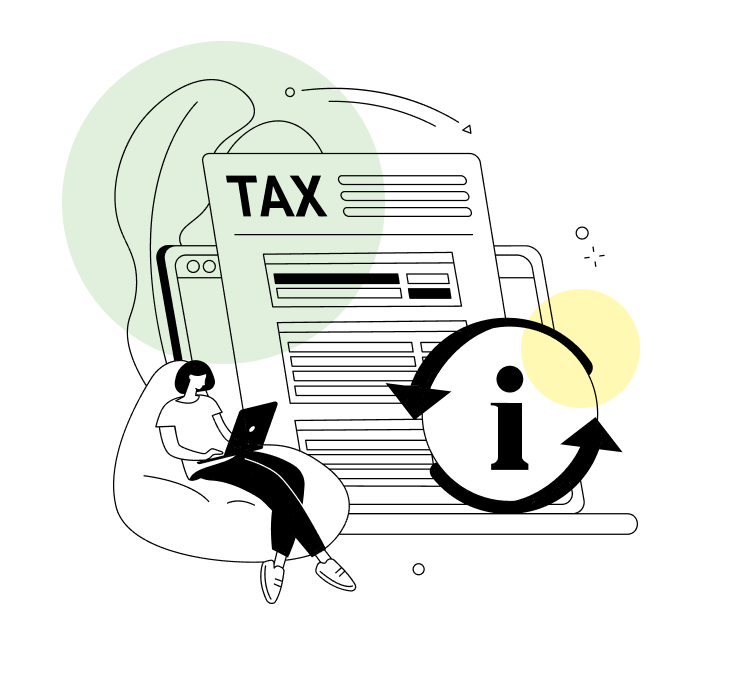Switch to TurboTax and get the expert help you need for only $60.
CRA Notices and Letters: What They Mean and What To Do if You Get One

Emily Verrecchia
October 25, 2022 | 4 Min Read
Updated for tax year 2025

A few years back, the Canada Revenue Agency (CRA) conducted a focus group to figure out why some taxpayers don’t open their CRA letters and notices. The #1 reason: ‘avoidance of suspected stressful content’. No matter how uneasy (or disinterested) the arrival of that brown envelope with the little black flag in the corner makes you feel, ignoring it isn’t an option. And, yes, the same holds true if it’s an email from the CRA.
While it’s natural to assume the worst (a tax bill! an audit!), there are many reasons for the CRA to be in touch, some of which may even be to your benefit. Here are six possibilities:
Key Takeaways
- If you receive a letter from the CRA, it’s important and may be time-sensitive. Open it without delay.
- Your Notice of Assessment (NOA) lets you know whether you owe money or are getting a tax refund.
- Prefer to receive all your CRA notices and letters via email? Sign up on CRA My Account online mail.
1. Notice of Assessment
If the CRA appears in your inbox 2-to-8 weeks after you’ve filed your tax return, chances are it’s a Notice of Assessment (NOA). The NOA summarizes your income as well as the credits and deductions you claimed on your taxes. Most importantly, it lets you know whether you owe money or are getting a refund.
CRA My Account online mail
Want to avoid brown envelopes for all eternity? Register to receive your notifications via email. By signing up for CRA My Account online mail, the CRA will email you anytime an important change is made on your account or when you have a new notice or letter. You’ll never be at the mercy of snail mail again. Just be sure not to ignore CRA emails!
2. Notice of Reassessment
A Notice of Reassessment is what you’ll get if the CRA wants more information about what you reported on your tax return after filing—or if they made a change to your return. This document looks almost exactly like an NOA except with the amended parts highlighted. It’s important to review this letter as soon as possible, so if you owe money, you can pay it off without unnecessary interest or penalties. Not to mention, if you think the CRA has made an error, you have 90 days to respond.
3. Canada child benefit notice
If you have one or more children under the age of 18 and have applied for the Canada child benefit (CCB), your CRA notice may contain details of the amount you’ll receive. On the off-chance you’ve received an overpayment on a past instalment, this notice will explain how the CRA plans to claim the money back — likely by deducting it from future CCB payments or your income tax refund.
4. GST/HST notice
The GST/HST credit is a quarterly tax-free payment that helps Canadians with low or modest incomes recover a portion of the sales tax they paid on goods and services. If the CRA sends you a GST/HST credit notice — cha-ching! – it means a refund is coming your way.
If you run your own business, you’ll want to be on the lookout for a GST/HST notice. After processing your sales tax return, the CRA sends out this document to let you know whether you have a sales tax refund, an amount owing, or neither.
5. Request for information
If you receive a Request for Information from the CRA, don’t be alarmed. It’s likely a routine check to ensure the information you provided on your tax return is correct. Typically, this letter asks you to provide receipts or documents to support a claim or deduction you made on your return. That’s it! The faster you provide the requested information, the faster it’ll be over. By contrast, ignoring this letter will raise a red flag and may create problems where none existed.
6. Audit
If you receive the dreaded Notice of an Audit… deep breath. Take a moment to wrap your head around what being audited actually means. At its core, an audit is simply a verification exercise where the claims made on your return(s) are cross-referenced with your records and receipts from the past six years.
If you receive a notice like this, the best thing to do is respond with the requested information promptly and be respectful throughout the process. At the end of the audit, the CRA will send you a final letter detailing its findings. If you disagree, you’ll have 90 days to appeal. Which is yet another reason you’ll want to open this notification sooner rather than later.
While you may never pounce on a CRA-themed letter with the same enthusiasm as a package from your favourite online retailer, giving CRA notices the attention they deserve is always the right thing to do.
Stay connected with us
From tax tips and expert guidance to fun videos and how-to demos, our TurboTax YouTube Channel is your access to everything you need when filing your taxes.
Subscribe to TurboTax
Emily Verrecchia
Emily has been an accounting aficionado since 2005 working mainly in the investment and real estate sectors. She has had the pleasure of running her own bookkeeping business, as well as helping individuals with planning for and filing their individual tax returns. Her wanderings have allowed for much experience and perspective. She now works as a Tax Expert and gets to write about taxes and personal finance with TurboTax Canada. When she is not looking up new tax credits, she is spending time with her highschool sweetheart, Eric and their two children whom she adores, Annabelle and Taylor. Her weakness is her mini Aussie, Maple. In her spare time, she immerses herself in her Reiki studies to experience some contrast and reset her soul!
Related articles

© 1997-2024 Intuit, Inc. All rights reserved. Intuit, QuickBooks, QB, TurboTax, Profile, and Mint are registered trademarks of Intuit Inc. Terms and conditions, features, support, pricing, and service options subject to change without notice.
Copyright © Intuit Canada ULC, 2024. All rights reserved.
The views expressed on this site are intended to provide generalized financial information designed to educate a broad segment of the public; it does not give personalized tax, investment, legal, or other business and professional advice. Before taking any action, you should always seek the assistance of a professional who knows your particular situation for advice on taxes, your investments, the law, or any other business and professional matters that affect you and/or your business.









